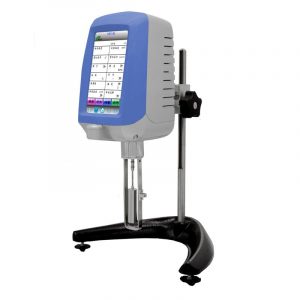Măsurarea proprietăților reologice ale șlamului ceramic
Proprietățile reologice ale șlamului ceramic sunt măsurate pentru a evalua comportamentul curgerii și caracteristicile de deformare a acestuia în timpul procesării., construcție și aplicare. Suspensia ceramică este de obicei compusă din pulbere ceramică și lichid (cum ar fi apa sau solventul organic), iar proprietățile sale reologice au un impact important asupra performanței și calității produselor ceramice.
Proprietate reologică
Următoarele sunt câteva metode și echipamente comune utilizate pentru a determina proprietățile reologice ale trecutului ceramic:
Măsurarea proprietăților reologice ale șlamului ceramic
Măsurarea vâscozității:
Vâscozitatea este un indicator important al fluidității nămolului. Metodele comune includ vâscozimetre rotative și vâscozimetre cu disc conic. Vizizometrele rotative calculează vâscozitatea măsurând relația dintre tensiunea de forfecare și viteza de forfecare formată de șlam în jurul unui cilindru sau sfere rotative. Vizizometrul con-disc folosește un disc conic cu distanță fixă pentru a măsura vâscozitatea suspensiei.
Analiza curbei de curgere:
Curbele reologice pot fi trasate prin măsurarea comportamentului de curgere a nămolului ca răspuns la modificările tensiunii de forfecare sau ratei de forfecare. Acest lucru se poate face folosind un reometru rotativ sau un metru de forfecare. Curbele reologice oferă informații despre efortul de forfecare, viteza de forfecare și vâscozitatea suspensiei în funcție de timp și condițiile de forfecare.
Test de forfecare dinamică:
Testul de forfecare dinamică este utilizat pentru a studia comportamentul reologic dinamic al nămolului, inclusiv modulul elastic, modulul de stocare și modulul de pierdere. This can be done using a dynamic Mechanics analyzer (DMA) or a frequency scan test.
Temperature dependence of rheological properties:
Similar to polymer pazes, the rheological properties of ceramic pazes may also change with temperature. The effect of temperature on slurry fluidity can be studied by conducting rheological tests at different temperatures.
These methods and devices can help evaluate key rheological properties such as viscosity, fluiditate, shear dilution effect, shear thinning effect, and thixotropy of ceramic paths. According to the specific requirements and applications, the appropriate method can be selected to determine the rheological properties of ceramic slurry.
Măsurarea proprietăților reologice ale șlamului ceramic
Rheological meter
Rheometer is an optional instrument for the rheological determination of ceramic slurry. Choosing the right rheometer needs to consider several factors, including application field, test requirements, budget and laboratory conditions. Here are a few key considerations for choosing the right rheometer:
Test types and application areas:
The first step is to determine what type of rheological tests you will be performing and in what areas. Different rheometers may focus on different test types, such as viscosity determination, dynamic shear testing, temperature dependence testing, etc. Depending on your needs, choose a rheometer with the right test functions for your application.
Range of rheological parameters:
Determine the range of rheological parameters you need to test, such as shear rate, shear stress, frequency, etc. Make sure the rheometer has enough range and sensitivity to meet your test requirements.
Sample capacity and adaptability:
Consider the sample size you typically use and the rheometer’s adaptability to sample size and type. Some rheometers may require large sample sizes and are suitable for batch testing of large samples, while others may be suitable for small sample sizes or samples requiring special shapes.
Măsurarea proprietăților reologice ale șlamului ceramic
Test accuracy and repeatability:
Understand the test accuracy and repeatability of the rheometer. Check the rheometer specifications and user reviews for performance and data accuracy. Especially for applications that require high accuracy and repeatability, it is important to select a rheometer with high accuracy.
Operations and Software:
Consider whether the rheometer’s operation and software interface are easy to use. The functionality and data processing capabilities of the rheometer software are also factors to consider.
Măsurarea proprietăților reologice ale șlamului ceramic
Based on laboratory budget constraints, determine the range of funds available and select the rheometer that fits the budget. It’s also important to focus not just on price, but on the balance between performance and quality.

